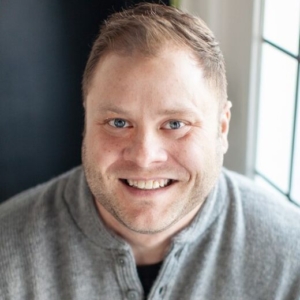Healthcare AI is undergoing a pivotal shift, both in how it works and what to expect from it.
Traditional AI models are effective at helping to solve specific problems, but they often require separate algorithms for each task, retraining for each new pathology and heavy customization to deploy across departments and facilities. That means limited clinical coverage, slow scaling and a growing burden on IT.
Foundation models are reshaping what’s possible.
Unlike traditional AI, foundation models are pretrained on massive, multimodal datasets — including imaging, clinical notes and lab results — using self-supervised learning techniques. This allows them to generalize across tasks, patient populations and care settings.
In other words: a single foundation model can learn from hundreds of real-world clinical examples, and then be quickly adapted to a wide range of use cases with minimal fine-tuning.
However, innovation alone isn’t enough. Health systems need a mechanism to deploy and orchestrate foundation models at scale to ensure insights are delivered to the right person, in the right workflow, at the right time. That’s where a true clinical AI platform like aiOS™ comes in.
From Fragmented Tasks to Full-Patient Intelligence
Take a patient presenting to the Emergency Department (ED) with chest pain. With a traditional AI deployment — whether through point solutions, marketplaces or even an orchestrated platform — multiple separate algorithms might run:
- One flags a suspected pulmonary embolism (PE)
- Another identifies a suspected lung nodule
- A third (if available) might flag a suspected incidental finding
- Meanwhile, the ED team manually checks lab results and electronic health record (EHR) history to piece together potential cardiac issues
Each result is helpful, but they arrive piecemeal, and it’s up to the clinician to connect the dots.
Now imagine the same case analyzed by a foundation model:
- A single model reviews the entire scan, with the ability to flag suspected. PE, lung nodules and signs of cardiac strain — all in one pass
- It correlates imaging findings with lab values like elevated troponin and BNP, and flags a history of hypertension from the EHR.
- It generates a synthesized summary of the patient’s condition and delivers it directly into the radiologist’s and ED team’s workflow.
- Incidental findings are sent to both the patient and primary care team to help ensure nothing falls through the cracks.
That’s not just broader insight. It’s context-aware clinical decision support that adapts to the full context of the patient. With a foundation model, you’re not running 10+ separate algorithms, you’re leveraging one powerful model to deliver multipathology, multimodal and multistakeholder insights.
Before we get too far ahead of ourselves, it’s important to emphasize that these are inherent capabilities of the foundation model, but it still requires the scalable infrastructure of a true AI platform to fulfill these promises.
Foundation models don’t replace the need for an AI platform. They supercharge it.
A clinical AI platform, like aiOS™, ensures that foundation model insights are delivered where and when they’re needed — orchestrating across systems, care teams and clinical moments. Without a platform, even the most powerful foundation model remains disconnected from care.
Think of it this way:
- Without a foundation model, a platform is still limited to the reach of task-specific algorithms.
- Without a platform, a foundation model can’t scale across workflows or generate action.
Together, they offer the scalable, comprehensive and clinically impactful AI that health systems expect.
What This Means for Patient Care
1. More Comprehensive Clinical Intelligence
Foundation models unlock broader clinical coverage, analyzing dozens of potential conditions — even incidentals — at once and connecting patterns across data types to reveal insights that single-task AI could overlook. A platform routes those findings across care teams, ensuring the right insight reaches the right person, at the right time — inside the right workflow.
2. One Model, Many Tasks
Instead of building or buying individual AI tools for each clinical condition, a foundation model can be fine-tuned to support multiple workflows — from diagnosis to triage to longitudinal management. That means faster expansion across service lines and fewer gaps in care. A platform ensures those workflows are unified and not scattered across vendors, logins or disconnected systems.
3. Multimodal Understanding
These models don’t just “see” — they read, compare and contextualize. Foundation models ingest images, EHR histories, lab results and more to provide richer insights than single-modality tools. A platform delivers insights into native systems, with role-based user interfaces (UIs).
4. Generalization Across Sites and Populations
Trained on millions of diverse clinical examples, foundation models generalize better across health systems, imaging protocols and patient demographics. That means more consistent performance and more equitable care. A platform monitors model performance in real time, across locations, use cases and changing clinical conditions.
From Fragmentation to Foundation
Foundation models give health systems the ability to think bigger, but scale doesn’t come from innovation alone — it comes from infrastructure.
- Without a platform, a foundation model can’t integrate into workflows or monitor its own impact.
- Without a foundation model, even the best platform is limited by narrow, task-specific AI.
Together, they create a new standard: intelligent, enterprise-grade AI that’s faster to deploy, easier to govern and built for real-world care.





